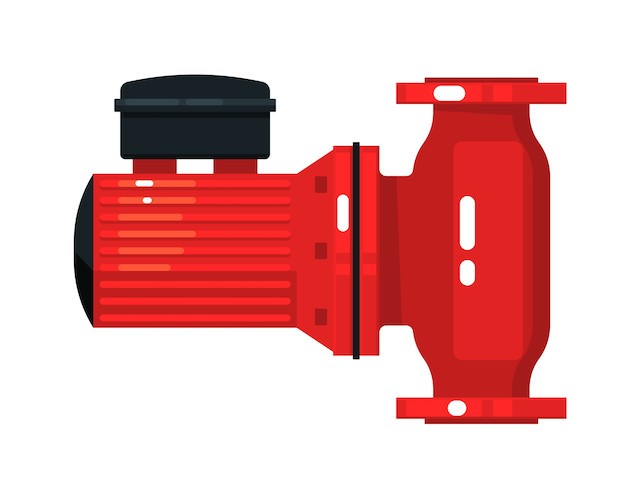Butterfly Valves vs Gate Valves: The Ultimate Guide
02-06-23

Projections show that the global industrial valve market will reach a size of $93.6 billion by 2028.
In an industrial setting, there are quite a few types of valves to choose from. However, two valves tend to go head-to-head with each other more often than the others – and that’s the gate valve and the butterfly valve.
You might be asking yourself right now, “Butterfly valves vs gate valves – which one is better for my company?”. Well, thankfully, that’s exactly what we’re here to answer. In this guide, we’re going to compare and contrast the two valves, helping you make the right choice when the time comes.
Read on to learn more!
Butterfly Valves Explained
A butterfly valve usually has a handle that can be turned through 90°. Doing this turns the disk, altering the flow through the valve.
The disk is perpendicular to the flow when fully closed, and in line with the flow when fully opened. You can control the flow by setting the gate anywhere between fully opened and fully closed.
Gearboxes are sometimes used to control the valve rather than manual operation. This is typically done with large valves where a water hammer may occur.
What Are Butterfly Valves Used For?
There are various butterfly valve options available for a range of applications. The different butterfly valve types are:
- Double-flanged
- Single-flanged
- Flangeless
- Wafer
- Lug Type
- Butt-welding ends
- U-section
Butterfly valves are generally used for applications that need flow modulation or throttling. They’re often quite light, so they can be easier to install and operate when dealing with large pipe diameters. They’re also easy to open and close quickly, making them suitable for applications such as emergency shutoffs.
Pros of Butterfly Valves
One of the main advantages of butterfly valves is that they can control flow easily and are ideal for throttling flows. They also function well in environments that involve high temperatures and pressures.
They’re lightweight and compact, making for easy installation and they take up less space. When it comes to larger sizes, these are one of the more affordable types of valves.
Cons of Butterfly Valves
Sometimes butterfly valves have been known to leave residual materials in pipelines, which may cause some contamination. Depending on what’s flowing through the valve, there may be some restriction in the movement of the disk.
A thicker valve body can interfere with the flow, even when fully open, resulting in a pressure drop. The turbulence of the flow can affect the movement of the disk, and as mentioned above, there’s also a risk of water hammers in certain situations.
Gate Valves Explained
A gate valve has a disk that acts like a gate to control the flow through the system. Due to its simple operation, it’s one of the most commonly used types of valve. It’s known as a full-port valve, as when it’s fully open it will match the inner diameter of the pipeline.
They have a handwheel which the operator must turn more than 360° to open and close the valve. As the wheel turns, the gate will move up and down. When the gate is fully down, nothing will flow through, and when it’s fully opened, the material can flow freely.
If the valve is left partially opened, the flow will crash against it. This causes the flow velocity to increase, which results in more turbulence. This isn’t ideal as it will wear the disk and seats faster than normal.
Gate valves can be operated manually, electrically, or pneumatically. Manual operation is the cheapest, but electrical and pneumatic operation allows for remote control.
What Are Gate Valves Used For?
Gate valves can be separated based on the gate type, bonnet type, and stem type.
The different gate types available are:
- Wedge disk
- Knife disk
- Double disk
The different bonnet types are:
- Screwed
- Bolted
- Welded
- Pressure sealed
The stem type is based on both the action and the position of the stem:
- Rising vs non-rising
- Remains within the valve vs rises out of the valve
Gate valves are often used in systems that demand good sealing and don’t often require switching. One of the main characteristics of gate valves is that they don’t interrupt the flow. This makes them ideal for large piping systems where resistance needs to be kept to a minimum. They’re also common in bi-directional flows, which many other valve types are unsuitable for.
Pros of Gate Valves
Since a gate valve is a full-port valve, there’s little to no resistance when it’s fully opened. This keeps the pressure drop in the system to a minimum as the liquid or gas can flow directly through.
Gate valves leave no residue behind in pipes and can withstand much higher pressure than butterfly valves. The slow operation also means there’s no risk of water hammers.
Cons of Gate Valves
Gate valves can only be used in a fully opened or fully closed position. As such, it’s not possible to control the flow anywhere in between. Operation is quite slow, and if it’s left partially, open it will cause damage to the gate.
They take up more space than butterfly valves, which can be an issue in some environments. Gate valves are also far more expensive than butterfly valves, especially when going for larger valves.
Butterfly Valves vs Gate Valves – Which Is Best?
To determine which type is best for your project, you need to look at your applications and needs. By comparing butterfly valves vs gate valves, you can determine which is more suitable to ensure good performance throughout your system.
Everlasting Valve Company supplies a range of valves for industrial applications. If you’re interested in investing in industrial valves, click here to get a free quote from us today.